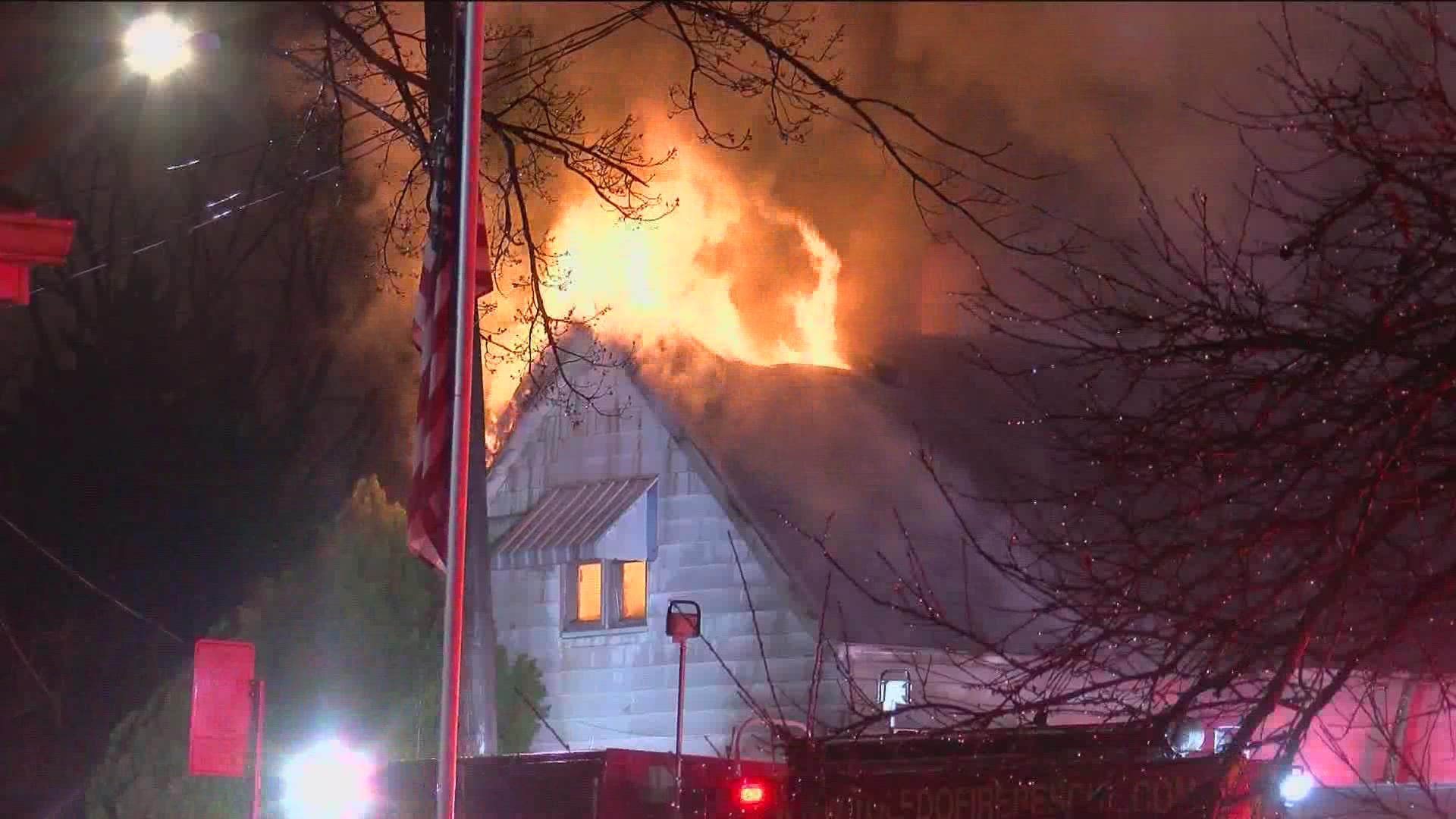TOLEDO, Ohio — Flames are not the only danger firefighters face. In fact, it's the invisible fight that is proving to be the most life altering.
According to the International Association of Fire Fighters, occupational cancer is the leading cause of death among firefighters, surpassing heart disease. Firefighters have a 9 percent greater risk of being diagnosed with cancer than the general public.
"We are exposed to chemicals every day at work," says Allison Armstrong, chief of the Toledo Fire and Rescue Department. "When we go to a structure fire, through that burning process, these chemicals are released and they absorb into our skin."
January is Firefighter Cancer Awareness Month. The issue of occupational cancer within the community is when it's felt here at home.
When Toledo firefighter Jennifer Hill went for her yearly mammogram three years ago, she had no idea she was about to get the news of a lifetime.
"I didn't have any signs," Hill said about the nearly nine-centimeter tumor that was discovered. "I was never able to feel it, and my doctors were never able to feel it."
Her diagnosis was triple negative breast cancer, one of the most aggressive forms of the disease. Hill endured 18 months of treatment, including multiple rounds of chemo, radiation and had a total of three surgeries.
"When I went through treatment it was COVID," said Hill. "People would text me weekly, checking in on me. I had a lot of support."
Although Hill's doctors were able to determine her cancer was caused through exposure to chemicals while on the job, the city pushed back against her workers compensations claim. It took two appeals for Hill's case to be granted.
"The last thing you want to deal with if you've been diagnosed with cancer is not getting your medical bills paid. Not getting the treatments that you need," Chief Armstrong said. "Because this is a newer issue that's still getting research and still getting attention legislatively, there are presumptive laws in the state of Ohio for firefighters that are diagnosed with cancer, but the problem is that the benefits may not line up with the presumptive laws."
According to the Centers for Disease Control and Prevention, firefighters can be exposed to hundreds of different chemicals in the form of gases and vapors.
The National Institute for Occupational Safety and Health reports, "Some of these hazardous substances are byproducts of combustion or burning, such as benzene and formaldehyde. Others come from the materials burning or in the fire debris, such as asbestos from older structures."
The report says firefighters can be exposed to these hazardous chemicals in a number of ways, including breathing them in, ingesting them and having contact with the skin.
"If you think about it, you go into a fire, it's hot. What happens when it's hot, like when you go into a sauna," Armstrong says. "Your pores open up. So when you're in that environment and you're not covered and protected then there's a higher chance of these chemicals being absorbed into your skin."
Hill says despite her battle with cancer, she still loves the job that caused it.
"I mean there's nothing to compare," said Hill. "It's a great job. It's a family. I know everybody says that, but it really is."
Armstrong said there are ways to help reduce exposure, but first responders need the public's support to "push for legislation, to make sure that our firefighters get the benefits and the treatment they deserve and here to make sure we can afford and fund to get the equipment to protect the firefighters."
MORE LOCAL HEADLINES:

